#malcolm woodward
Explore tagged Tumblr posts
Text










Firefly 1x12 The Message
#took a break from making myself sad with this 911 gif set i'm working on (read: thinking about and have not touched)#instead made myself vintage sad with this i guess?#also hilariously ironic bc tim minear has been at it for decades. truly.#tv: firefly#blood tw#gore tw#i guess?#firefly#fireflyedit#firefly 2002#firefly serenity#zoe washburne#malcolm reynolds#tracey smith#mythtakensgif#tvedit#tvgifs#televisiongifs#gina torres#nathan fillion#jonathan m woodward#firefly spoilers#if people care about 22 year old spoilers#cinemapix#dailyflicks
183 notes
·
View notes
Text
youtube
The Bats - Free All The Monsters
#the bats#robert scott#kaye woodward#paul kean#malcolm grant#jangle pop#flying nun records#free all the monsters#2011#Youtube
2 notes
·
View notes
Text





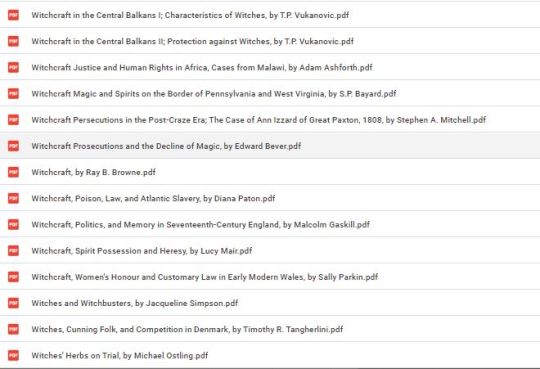
JSTOR Articles on the History of Witchcraft, Witch Trials, and Folk Magic Beliefs
This is a partial of of articles on these subjects that can be found in the JSTOR archives. This is not exhaustive - this is just the portion I've saved for my own studies (I've read and referenced about a third of them so far) and I encourage readers and researchers to do their own digging. I recommend the articles by Ronald Hutton, Owen Davies, Mary Beth Norton, Malcolm Gaskill, Michael D. Bailey, and Willem de Blecourt as a place to start.
If you don't have personal access to JSTOR, you may be able to access the archive through your local library, university, museum, or historical society.
Full text list of titles below the cut:
'Hatcht up in Villanie and Witchcraft': Historical, Fiction, and Fantastical Recuperations of the Witch Child, by Chloe Buckley
'I Would Have Eaten You Too': Werewolf Legends in the Flemish, Dutch and German Area, by Willem de Blecourt
'The Divels Special Instruments': Women and Witchcraft before the Great Witch-hunt, by Karen Jones and Michael Zell
'The Root is Hidden and the Material Uncertain': The Challenges of Prosecuting Witchcraft in Early Modern Venice, by Jonathan Seitz
'Your Wife Will Be Your Biggest Accuser': Reinforcing Codes of Manhood at New England Witch Trials, by Richard Godbeer
A Family Matter: The CAse of a Witch Family in an 18th-Century Volhynian Town, by Kateryna Dysa
A Note on the Survival of Popular Christian Magic, by Peter Rushton
A Note on the Witch-Familiar in Seventeenth Century England, by F.H. Amphlett Micklewright
African Ideas of Witchcraft, by E.G. Parrinder
Aprodisiacs, Charms, and Philtres, by Eleanor Long
Charmers and Charming in England and Wales from the Eighteenth to the Twentieth Century, by Owen Davies
Charming Witches: The 'Old Religion' and the Pendle Trial, by Diane Purkiss
Demonology and Medicine in the Sixteenth and Seventeenth Centuries, by Sona Rosa Burstein
Denver Tries A Witch, by Margaret M. Oyler
Devil's Stones and Midnight Rites: Megaliths, Folklore, and Contemporary Pagan Witchcraft, by Ethan Doyle White
Edmund Jones and the Pwcca'r Trwyn, by Adam N. Coward
Essex County Witchcraft, by Mary Beth Norton
From Sorcery to Witchcraft: Clerical Conceptions of Magic in the Later Middle Ages, by Michael D. Bailey
German Witchcraft, by C. Grant Loomis
Getting of Elves: Healing, Witchcraft and Fairies in the Scottish Witchcraft Trials, by Alaric Hall
Ghost and Witch in the Sixteenth and Seventeenth Centuries, by Gillian Bennett
Ghosts in Mirrors: Reflections of the Self, by Elizabeth Tucker
Healing Charms in Use in England and Wales 1700-1950, by Owen Davies
How Pagan Were Medieval English Peasants?, by Ronald Hutton
Invisible Men: The Historian and the Male Witch, by Lara Apps and Andrew Gow
Johannes Junius: Bamberg's Famous Male Witch, by Lara Apps and Andrew Gow
Knots and Knot Lore, by Cyrus L. Day
Learned Credulity in Gianfrancesco Pico's Strix, by Walter Stephens
Literally Unthinkable: Demonological Descriptions of Male Witches, by Lara Apps and Andrew Gow
Magical Beliefs and Practices in Old Bulgaria, by Louis Petroff
Maleficent Witchcraft in Britian since 1900, by Thomas Waters
Masculinity and Male Witches in Old and New England, 1593-1680, by E.J. Kent
Methodism, the Clergy, and the Popular Belief in Witchcraft and Magic, by Owen Davies
Modern Pagan Festivals: A Study in the Nature of Tradition, by Ronald Hutton
Monstrous Theories: Werewolves and the Abuse of History, by Willem de Blecourt
Neapolitan Witchcraft, by J.B. Andrews and James G. Frazer
New England's Other Witch-Hunt: The Hartford Witch-Hunt of the 1660s and Changing Patterns in Witchcraft Prosecution, by Walter Woodward
Newspapers and the Popular Belief in Witchcraft and Magic in the Modern Period, by Owen Davies
Occult Influence, Free Will, and Medical Authority in the Old Bailey, circa 1860-1910, by Karl Bell
Paganism and Polemic: The Debate over the Origins of Modern Pagan Witchcraft, by Ronald Hutton
Plants, Livestock Losses and Witchcraft Accusations in Tudor and Stuart England, by Sally Hickey
Polychronican: Witchcraft History and Children, interpreting England's Biggest Witch Trial, 1612, by Robert Poole
Publishing for the Masses: Early Modern English Witchcraft Pamphlets, by Carla Suhr
Rethinking with Demons: The Campaign against Superstition in Late Medieval and Early Modern Europe from a Cognitive Perspective, by Andrew Keitt
Seasonal Festivity in Late Medieval England, Some Further Reflections, by Ronald Hutton
Secondary Targets: Male Witches on Trial, by Lara Apps and Andrew Gow
Some Notes on Modern Somerset Witch-Lore, by R.L. Tongue
Some Notes on the History and Practice of Witchcraft in the Eastern Counties, by L.F. Newman
Some Seventeenth-Century Books of Magic, by K.M. Briggs
Stones and Spirits, by Jane P. Davidson and Christopher John Duffin
Superstitions, Magic, and Witchcraft, by Jeffrey R. Watt
The 1850s Prosecution of Gerasim Fedotov for Witchcraft, by Christine D. Worobec
The Catholic Salem: How the Devil Destroyed a Saint's Parish (Mattaincourt, 1627-31), by William Monter
The Celtic Tarot and the Secret Tradition: A Study in Modern Legend Making, by Juliette Wood
The Cult of Seely Wights in Scotland, by Julian Goodare
The Decline of Magic: Challenge and Response in Early Enlightenment England, by Michael Hunter
The Devil-Worshippers at the Prom: Rumor-Panic as Therapeutic Magic, by Bill Ellis
The Devil's Pact: Diabolic Writing and Oral Tradition, by Kimberly Ball
The Discovery of Witches: Matthew Hopkins' Defense of his Witch-hunting Methods, by Sheilagh Ilona O'Brien
The Disenchantment of Magic: Spells, Charms, and Superstition in Early European Witchcraft Literature, by Michael D. Bailey
The Epistemology of Sexual Trauma in Witches' Sabbaths, Satanic Ritual Abuse, and Alien Abduction Narratives, by Joseph Laycock
The European Witchcraft Debate and the Dutch Variant, by Marijke Gijswijt-Hofstra
The Flying Phallus and the Laughing Inquisitor: Penis Theft in the Malleus Maleficarum, by Moira Smith
The Framework for Scottish Witch-Hunting for the 1590s, by Julian Goodare
The Imposture of Witchcraft, by Rossell Hope Robbins
The Last Witch of England, by J.B. Kingsbury
The Late Lancashire Witches: The Girls Next Door, by Meg Pearson
The Malefic Unconscious: Gender, Genre, and History in Early Antebellum Witchcraft Narratives, by Lisa M. Vetere
The Mingling of Fairy and Witch Beliefs in Sixteenth and Seventeenth Century Scotland, by J.A. MacCulloch
The Nightmare Experience, Sleep Paralysis, and Witchcraft Accusations, by Owen Davies
The Pursuit of Reality: Recent Research into the History of Witchcraft, by Malcolm Gaskill
The Reception of Reginald Scot's Discovery of Witchcraft: Witchcraft, Magic, and Radical Religions, by S.F. Davies
The Role of Gender in Accusations of Witchcraft: The Case of Eastern Slovenia, by Mirjam Mencej
The Scottish Witchcraft Act, by Julian Goodare
The Werewolves of Livonia: Lycanthropy and Shape-Changing in Scholarly Texts, 1550-1720, by Stefan Donecker
The Wild Hunter and the Witches' Sabbath, by Ronald Hutton
The Winter Goddess: Percht, Holda, and Related Figures, by Lotta Motz
The Witch's Familiar and the Fairy in Early Modern England and Scotland, by Emma Wilby
The Witches of Canewdon, by Eric Maple
The Witches of Dengie, by Eric Maple
The Witches' Flying and the Spanish Inquisitors, or How to Explain Away the Impossible, by Gustav Henningsen
To Accommodate the Earthly Kingdom to Divine Will: Official and Nonconformist Definitions of Witchcraft in England, by Agustin Mendez
Unwitching: The Social and Magical Practice in Traditional European Communities, by Mirjam Mencej
Urbanization and the Decline of Witchcraft: An Examination of London, by Owen Davies
Weather, Prayer, and Magical Jugs, by Ralph Merrifield
Witchcraft and Evidence in Early Modern England, by Malcolm Gaskill
Witchcraft and Magic in the Elizabethan Drama by H.W. Herrington
Witchcraft and Magic in the Rochford Hundred, by Eric Maple
Witchcraft and Old Women in Early Modern Germany, by Alison Rowlands
Witchcraft and Sexual Knowledge in Early Modern England, by Julia M. Garrett
Witchcraft and Silence in Guillaume Cazaux's 'The Mass of Saint Secaire', by William G. Pooley
Witchcraft and the Early Modern Imagination, by Robin Briggs
Witchcraft and the Western Imagination by Lyndal Roper
Witchcraft Belief and Trals in Early Modern Ireland, by Andrew Sneddon
Witchcraft Deaths, by Mimi Clar
Witchcraft Fears and Psychosocial Factors in Disease, by Edward Bever
Witchcraft for Sale, by T.M. Pearce
Witchcraft in Denmark, by Gustav Henningsen
Witchcraft in Germany, by Taras Lukach
Witchcraft in Kilkenny, by T. Crofton Croker
Witchcraft in Anglo-American Colonies, by Mary Beth Norton
Witchcraft in the Central Balkans I: Characteristics of Witches, by T.P. Vukanovic
Witchcraft in the Central Balkans II: Protection Against Witches, by T.P. Vukanovic
Witchcraft Justice and Human Rights in Africa, Cases from Malawi, by Adam Ashforth
Witchcraft Magic and Spirits on the Border of Pennsylvania and West Virginia, by S.P. Bayard
Witchcraft Persecutions in the Post-Craze Era: The Case of Ann Izzard of Great Paxton, 1808, by Stephen A. Mitchell
Witchcraft Prosecutions and the Decline of Magic, by Edward Bever
Witchcraft, by Ray B. Browne
Witchcraft, Poison, Law, and Atlantic Slavery, by Diana Paton
Witchcraft, Politics, and Memory in Seventeeth-Century England, by Malcolm Gaskill
Witchcraft, Spirit Possession and Heresy, by Lucy Mair
Witchcraft, Women's Honour and Customary Law in Early Modern Wales, by Sally Parkin
Witches and Witchbusters, by Jacqueline Simpson
Witches, Cunning Folk, and Competition in Denmark, by Timothy R. Tangherlini
Witches' Herbs on Trial, by Michael Ostling
#witchcraft#witchblr#history#history of witchcraft#occult#witch trials#research#recommended reading#book recs#jstor
2K notes
·
View notes
Text

🧸✨ My Squishmallow Picks ✨🧸
My Squishmallow Picks! Well, at least my favorites.
This post contains affiliate links. Mystical Enclave is a participant in the Amazon Services LLC Associates Program, an affiliate advertising program designed to provide a way for websites to earn advertising revenues by advertising and linking to Amazon.com. We only recommend products we have either used, are using, or would use and share with our family and friends.
Squishmallows are pretty famous for being soft, squishy, and cuddly... But also collectible! Here are 10 of these cute things! (My favorites, of course)
1. Squishmallows Original 14-Inch Analea Purple Tabby Caticorn with Fuzzy White Belly - Official Jazwares Large Plush
Link: https://amzn.to/4gcLa4L
Rating: ⭐⭐⭐⭐⭐ Great for cuddles and is really adorable. Easy to use a box and blanket for a bedroom with said squishmallow. You can also let your dogs or cats sniff it and let them play with it if you don't mind: Free Toy! All my cats sniffed and left.
2. Squishmallows Original 5-Inch Austin Avocado - Official Jazwares Plush
Link: https://amzn.to/3ZhhJIL
Rating: ⭐⭐⭐⭐ It's small, so 4 stars only. Still cute and adorable. Much easier to store on a shelf or in your closet that you are DYING to use after 1 second of looking at it. Cats love this. At least, mine do.
3. Squishmallows Original 20-Inch Nabila Purple Tie-Dye Narwhal - Official Jazwares Jumbo Plush
Link: https://amzn.to/3YYr0VH
Rating: ⭐⭐⭐⭐⭐ It's pretty big. 20 inches? A foot long and if it was 22 inches, we'd get two feet! Pretty huge, right? Cute too. It's a Narwhal with a name, personality and looks. I mean, who doesn't love Narwhals?
4. Squishmallows Original 16-Inch Malcolm Mushroom - Official Jazwares Large Plush
Link: https://amzn.to/472ki34
Rating: ⭐⭐⭐⭐⭐ Another huge one. These are pretty tall. I found this one in my spare time on amazon whenever I got obsessed with mushrooms (STILL AM-) and found a few mushroom decorations and then searched up for a squishmallow and found this one. 10/10, will recommend forever until I die. Or, until I stop obsessing over it.
5. Squishmallows Original 14-Inch Scarlito Purple Barn Owl - Large Ultrasoft Official Jazwares Plush
Link: https://amzn.to/3SYOciX
Rating: ⭐⭐⭐⭐⭐ 1 foot and 2 inches. Ultrasoft too. I love it. I personally prefer Hedwig though... oops, spoiler alert, I'm a big potterhead. Scarlito is the perfect owl up for adoption. I once found a squish beanie from TY called Kirra and this was the perfect friend for her. Background information, Kirra is a cat.
6. Squishmallows Original 16-Inch Woodward Snowshoe Cat with Fuzzy Belly - Official Jazwares Large Plush
Link: https://amzn.to/3Xf4qqH
Rating: ⭐⭐⭐⭐⭐ This one made me happy. I will love cats until the end of my days. Oh wait, you weren't interested in that? Anyway, 10/10.
7. Squishmallows Original 5-Inch Maui Yellow Pineapple with White Belly - Official Jazwares Plush
Link: https://amzn.to/3z4pGpE
Rating: ⭐⭐⭐⭐⭐ Okay, if you hate pineapple, skip this one. I love pineapple personally and I don't care about the size. It's pretty neat, isn't it?
8. Squishmallows Original 20-Inch Pyle Purple Mushroom - Jumbo Ultrasoft Official Jazwares Plush
Link: https://amzn.to/3Ml4LSs
Rating: ⭐⭐⭐⭐⭐ Mushrooms AGAIN. I love them! Anyway, this one is perfect for Halloween, actually.
9. Squishmallows Original 8-Inch Felexine The Rainbow Fox - Official Jazwares Plush - Collectible Soft & Squishy Fox Stuffed Animal Toy - Add to Your Squad - Gift for Kids, Girls & Boys
Link: https://amzn.to/3YX6Rzi
Rating: ⭐⭐⭐⭐⭐ Felexine is purrfect for your fellow foxes. Also good for cats to play with.
10. Squishmallows Original 12-Inch Trudy Ladybug with Spotted Wings - Official Jazwares Plush
Link: https://amzn.to/3YZn2MD
Rating: ⭐⭐⭐⭐⭐ Easy to love, cuddle, and squish. Perferably squish. Kirra would love if Trudy visited!
Here's the end of the list! If you want to learn about the squishmallow or buy it at the official store, Jazwares, you can head over to their website OR check the bio of the squishmallow to learn about the squishmallow.
Love, Magical Enclave
P.S Want to learn about the new book series I'm reading? Look at my review I will post at 8 PM sharp!
6 notes
·
View notes
Text
𝐈𝐍𝐓𝐑𝐎
𝘏𝘦𝘭𝘭𝘰 𝘮𝘺 𝘴𝘵𝘢𝘳𝘴! 𝘚𝘰 𝘐 𝘳𝘦𝘢𝘭𝘪𝘻𝘦𝘥 𝘐 𝘯𝘦𝘷𝘦𝘳 𝘥𝘪𝘥 𝘢 𝘪𝘯𝘵𝘳𝘰𝘥𝘶𝘤𝘵𝘪𝘰𝘯 𝘰𝘳 𝘵𝘦𝘭𝘭 𝘺𝘰𝘶 𝘢𝘯𝘺𝘵𝘩𝘪𝘯𝘨 𝘢𝘣𝘰𝘶𝘵 𝘮𝘺𝘴𝘦𝘭𝘧 𝘴𝘰 𝘐 𝘥𝘦𝘤𝘪𝘥𝘦𝘥 𝘵𝘰𝘰 𝘯𝘰𝘸.

𝙉𝙖𝙢𝙚: 𝙖𝙡𝙚𝙭
𝘼𝙜𝙚: 𝙣𝙤𝙩 𝙨𝙖𝙮𝙞𝙣𝙜~
𝙂𝙚𝙣𝙙𝙚𝙧: 𝙛𝙚𝙢𝙖𝙡𝙚
𝙎𝙚𝙭𝙪𝙖𝙡𝙞𝙩𝙮: 𝙣𝙤𝙣-𝙗𝙞𝙣𝙖𝙧𝙮 𝙖𝙣𝙙 𝙖𝙧𝙤𝙖𝙨𝙚
𝙥𝙧𝙤𝙪𝙣𝙤𝙪𝙣𝙨: 𝙖𝙣𝙮
𝙇𝙞𝙠𝙚𝙨: 𝙢𝙮 𝙛𝙧𝙞𝙚𝙣𝙙𝙨 . 𝙎𝙡𝙚𝙚𝙥 . 𝙙𝙧𝙖𝙬𝙞𝙣𝙜 . 𝙏𝙑 . 𝙢𝙪𝙨𝙞𝙘 . 𝙍𝙖𝙞𝙣 . 𝙨𝙣𝙤𝙬 .
𝘿𝙞𝙨𝙡𝙞𝙠𝙚𝙨: 𝙡𝙤𝙪𝙙 𝙣𝙤𝙞𝙨𝙚𝙨 . 𝙈𝙤𝙨𝙩 𝙥𝙚𝙤𝙥𝙡𝙚. 𝙁𝙖𝙠𝙚 𝙛𝙧𝙞𝙚𝙣𝙙𝙨 . 𝙃𝙤𝙢𝙤𝙥𝙝𝙤𝙗𝙚𝙨 . 𝘽𝙪𝙡𝙡𝙞𝙚𝙨 . 𝙍𝙖𝙘𝙞𝙨. 𝙎𝙪𝙣.

𝘍𝘢𝘯𝘥𝘰𝘮𝘴: 𝘛𝘩𝘦 𝘢𝘳𝘳𝘰𝘸𝘷𝘦𝘳𝘴𝘦 (🏹,⚡,👽,⏰). 9-1-1 (🚔) . 𝘓𝘰𝘷𝘦 𝘚𝘪𝘮𝘰𝘯(📧) . 𝘋𝘦𝘮𝘰𝘯 𝘴𝘭𝘢𝘺𝘦𝘳 (😈)
𝘚𝘩𝘪𝘱𝘴|
(𝘊𝘞) 🏹: 𝘚𝘭𝘢𝘥𝘦 𝘞𝘪𝘭𝘴𝘰𝘯 𝘹 𝘖𝘭𝘪𝘷𝘦𝘳 𝘘𝘶𝘦𝘦𝘯 - E2 𝘭𝘶𝘳𝘢𝘭 𝘭𝘢𝘯𝘤𝘦 𝘹 𝘋𝘪𝘢𝘯𝘢 𝘥𝘳𝘢𝘬𝘦 𝘹 𝘧𝘰𝘭𝘪𝘴𝘪𝘵𝘺 𝘚𝘮𝘰ke- 𝘓𝘺𝘭𝘢 𝘔𝘪𝘤𝘩𝘢𝘦𝘭 𝘹 𝘑𝘰𝘩𝘯 𝘥𝘪𝘨𝘨𝘭𝘦 - Roy Harper x Thea queen - Malcolm merlyn x maseo Yamashiro
(CW)⚡: leonerd smart x Barry Allen - Hartly rathaway x Cisco remon - mark merdon x Tony Woodward - Lisa snart x Lisa snart
(CW)👽: Lena Luther x Kara danger - James Olson x Winn schott - Alura x Alex Danvers x Kelly Olson
(CW)⏰: mick Rory x ray Palmer x catlian snow - John constantine x Gary green - Sara lance x Nyssa Al goul x Ava sharpe - Nora darhk x zari tomazi 1.0 - charlie x sari tomazi 2.0
(Hulu) 🚔: eddie buckley x Eddie diaz - Harrietta Wilson x Karen wilson - Maddie backley x chimney han - Athena grant x Bobby Nash
(Hulu)📧: simon spier x Bram Greenfield - Abigail Suso x Leah Burke
(Anime)😈: Inosuke Hashibira x Tanjiro Kamado -Zenitsu Agatsuma x Nezuko Kamado

𝘼𝙊3: 𝙨𝙠𝙖𝙩𝙚𝙗𝙤𝙧𝙙𝙞𝙣𝙜_𝙘𝙤𝙘𝙠𝙧𝙤𝙖𝙘𝙝𝙚
𝙒𝙖𝙩𝙩𝙥𝙖𝙙: 𝙨𝙠𝙖𝙩𝙚𝙗𝙤𝙧𝙙𝙞𝙣𝙜_𝙘𝙤𝙘𝙠𝙧𝙤𝙪𝙘𝙝
𝙏𝙞𝙠 𝙩𝙤𝙠: 𝙎𝙄𝙈𝙋4𝙇𝙄𝙁𝙀
𝘿𝙞𝙨𝙘𝙤𝙧𝙙: 𝙨𝙠𝙖𝙩𝙚𝙗𝙤𝙧𝙙𝙞𝙣𝙜_𝙘𝙤𝙘𝙡𝙧𝙤𝙪𝙘𝙝

𝘵𝘩𝘢𝘵'𝘴 𝘢𝘭𝘭 𝘮𝘺 𝘴𝘵𝘢𝘳𝘴 𝘱𝘭𝘦𝘢𝘴𝘦 𝘨𝘰 𝘫𝘰𝘪𝘯 𝘵𝘩𝘦 𝘥𝘪𝘴𝘤𝘰𝘳𝘥 𝘤𝘩𝘢𝘵 𝘮𝘢𝘺𝘣𝘦?
𝘛𝘩𝘦 𝘤𝘩𝘢𝘵: 𝘩𝘵𝘵𝘱𝘴://𝘥𝘪𝘴𝘤𝘰𝘳𝘥.𝘤𝘰𝘮/𝘪𝘯𝘷𝘪𝘵��/𝘤7𝘙𝘻𝘤𝘫𝘥𝘦
#arrow#intro post#supergirl#supercorp#sladiver#coldflash#Ao3#Wattpad#dc legends of tomorrow#the flash#Gay people#i'm aroace#green arrow#fanfic#angst
7 notes
·
View notes
Text

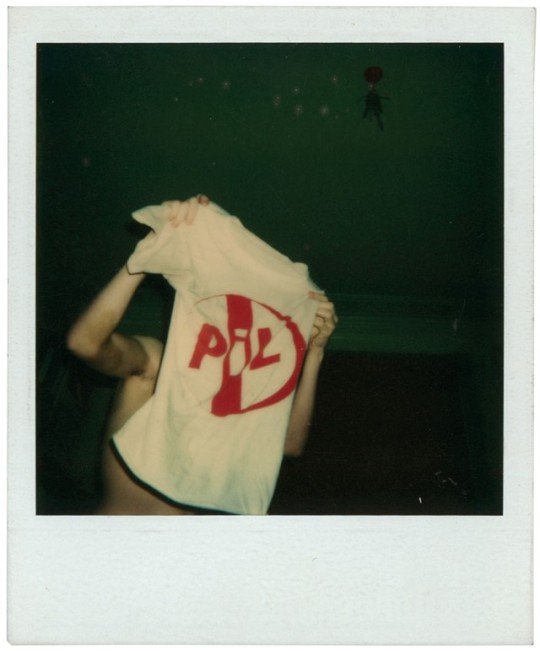
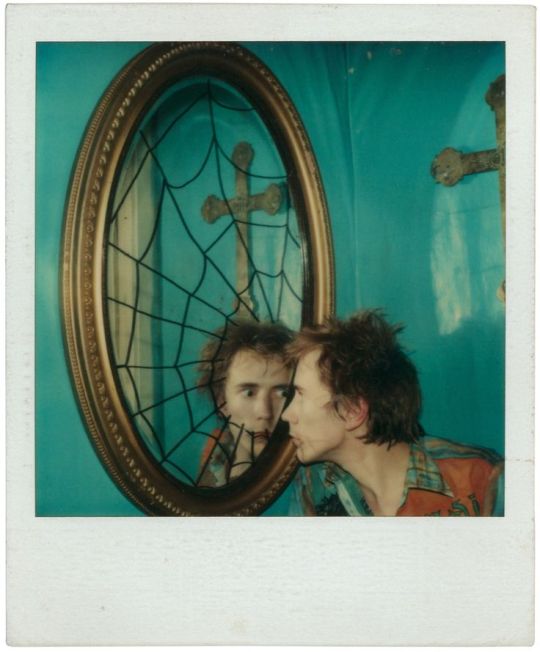
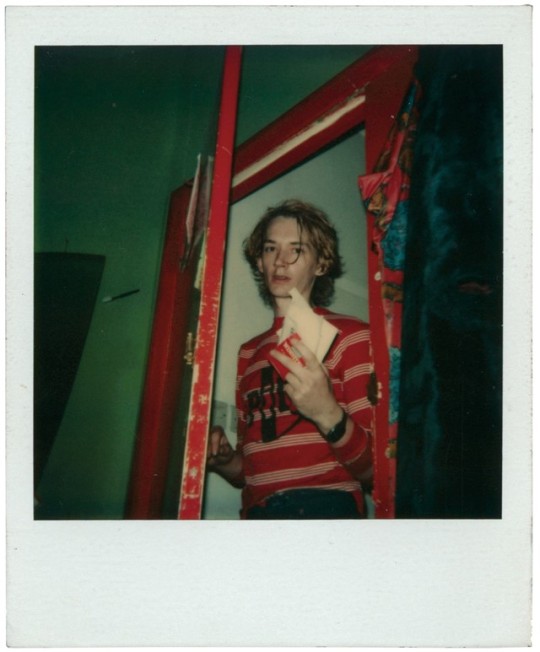


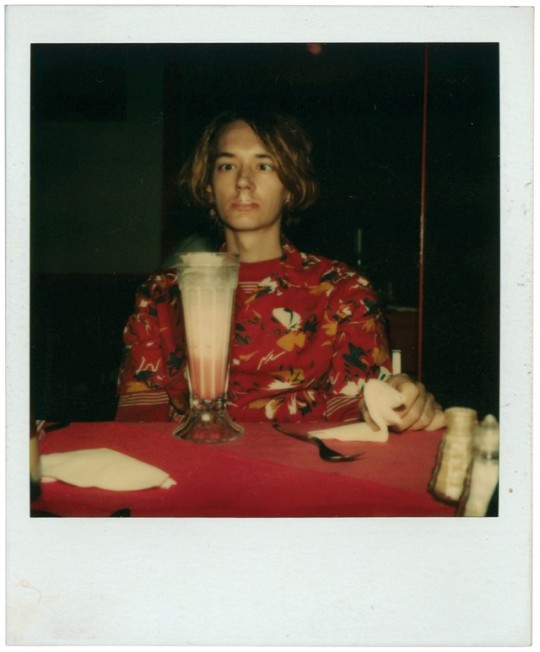
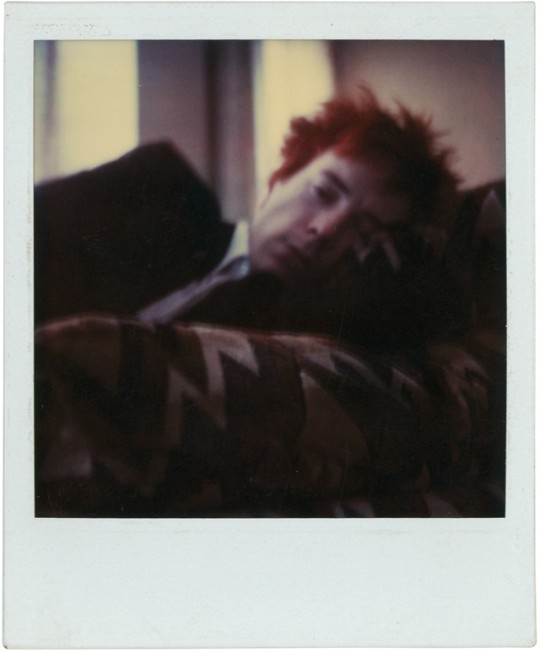


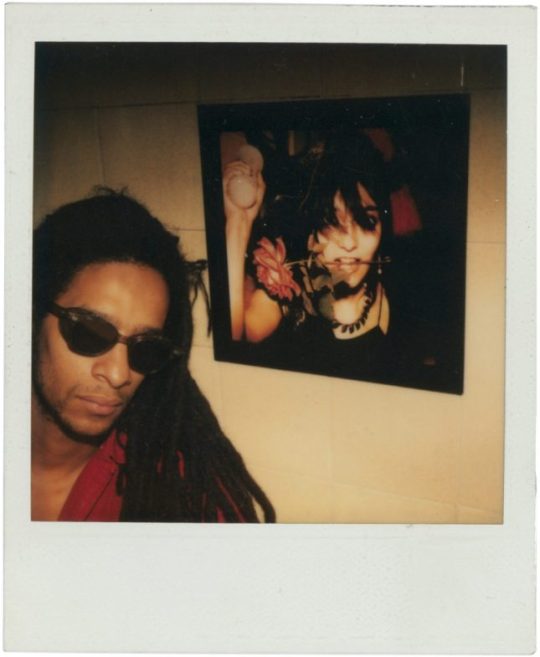
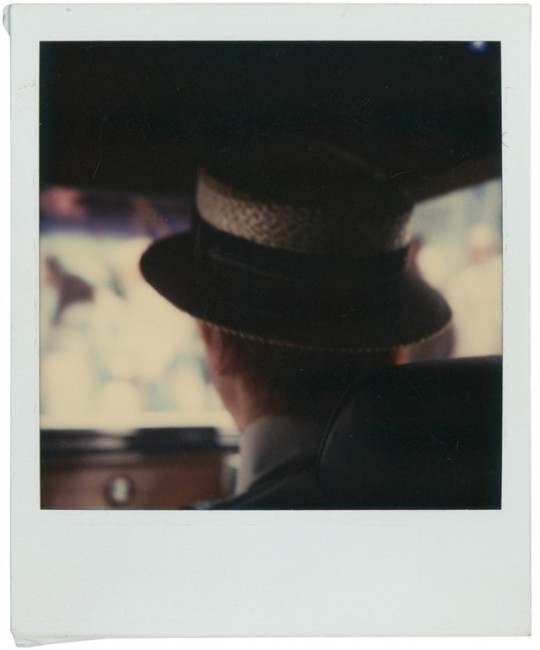
"THE QUALITY OF THE PICTURES WAS SO GOOD. I HAD A STINT OF HAVING IT WITH ME ALL THE TIME."
PIC(S) INFO: Mega-spotlight on behind-the-scenes Polaroids of English post-rock/post-punk/experimental music group PUBLIC IMAGE LIMITED, c. 1980-'81. 📸: Jeannette Lee.
OVERVIEW: "In late 1978, one year after the tumultuous break up of the SEX PISTOLS, John Lydon (a.k.a. Johnny Rotten) launched his new band, PUBLIC IMAGE LIMITED, featuring his childhood friend Jah Wobble on bass, and Keith Levene, former guitarist for THE CLASH, on guitar. Lydon had had a rough time of it; by the time the Sex Pistols disintegrated, he had no money, no privacy thanks to the band’s enduring notoriety and no real control over his punk past (former manager Malcolm McLaren had staked claim to the SEX PISTOLS’ image, forbidding Lydon to use the name Rotten for future endeavours). As a result, he deemed that Public Image Limited would be different: a band-cum-company comprised of trusted co-collaborators.
Shortly after founding the band he approached Jeannette Lee, now best known as the co-director of iconic independent label Rough Trade Records, inviting her into the PiL fold as a “non-musical member” of the group to help with press, promotion and general administration. Thus ensued a magical period of innovation and cooperation which saw PiL rise to greater and greater heights, blazing an avant-garde, post-punk trail. Now, a new limited-edition book of Polaroid photographs taken by Lee during her three or four-year tenure with the group, and published by IDEA, sheds candid light on this formative period of the band’s history.
Lydon and Lee had met through Don Letts, the then-manager of famous punk-reggae clothing store Acme Attractions on the King’s Road (where Lee also worked), and bonded over a shared love of reggae and their north London council estate backgrounds. “He came to me and said, "I’m starting this new thing. I want to work with people that I trust. I don’t want to work with any more idiots,"" Lee recalls in an interview with Jarvis Cocker – a close friend, whom she also manages and who helped her compile the publication – for the book’s accompanying text. “There was no real job description: just like-minded people joining forces.” Alongside the key band members, these included Don Letts, Sheila Rock, Judy Nylon and Plaxy Locatelli, among others, all of whom set up office in Lydon’s house in Gunter Grove, between Fulham and the King’s Road, and spent their days, in Lee’s words, "making manifestos and then living according to them."
It is in this intimate setting that many of Lee’s pictures are staged, taken from 1980 onwards, after the purchase of her Polaroid SX-70 camera on a trip to New York. “The quality of the pictures was so good. I had a stint of having it with me all the time. Taking pictures everywhere I went,” she tells Cocker. Lee was a natural photographer, her snapshots rendered in dreamy hues and boasting compelling compositions. Some of the images from the book will be recognisable to PiL fans – such as the brilliant photograph of Lydon gazing furtively into a spiderweb-etched mirror, which was used as the cover for the "Flowers of Romance" single – while many more have never been seen, and offer viewers wonderful insight into the very private world of PUBLIC IMAGE LIMITED. There’s a picture of one member tenderly clasping a puppy, one of Levene sitting in front of a strawberry milkshake, traces of its froth forming a moustache across his top lip, another of Lee and a boater-topped Lydon grinning goofily into the camera: the softer, sillier side of punk."
-- ANOTHER MAG, "Behind-the-Scenes Polaroids of Public Image Limited’s Heyday," by Daisy Woodward, c. May 2017
Source: www.anothermag.com/art-photography/9825/behind-the-scenes-polaroids-of-public-image-limiteds-heyday.
#PUBLIC IMAGE LTD.#PUBLIC IMAGE LTD#PUBLIC IMAGE#PUBLIC IMAGE LIMITED#PiL#Post-rock#John Lydon#Polaroids#Photography#Experimental Music#1981#Keith Levene#Jeannette Lee#Post-punk#Flowers of Romance 1981#Experimental#Flowers of Romance Sessions#Don Letts#PUBLIC IMAGE LTD. Flowers of Romance#PUBLIC IMAGE LTD Flowers of Romance#Flowers of Romance#Polaroid Photos#Polaroid photography#1980s#Polaroid
20 notes
·
View notes
Text
My thoughts as I’m watching 24 seasons of law & order svu:
Season 9
9x01 her waiving her Miranda rights, does not seem legal… it was highly entertaining though. Kathy’s face when Janice talked to her is priceless. Benson and Stabler putting their silent communication to good use is always great. Love the twist at the end!
What order did they shoot these episodes in? Because Benson's hair is very different in 9x03 than it was in the first two episodes…
9x04, those are slow chest compressions… And good on Elliot to admit that his anger isn't helping and that he is not proud of it.
I thought there was something in the pizza box in 9x06, but I was thinking body part, not bomb. That Olivia would be attacked once she got home was pretty clear, but I'm glad that she got her anger under control.
9x07, after Stabler gets his head bashed into the window, he has glass all over his shoulder, which is practically the first place Benson puts her hands. Him panicking after not being able to see is some great acting. Benson looking out for Stabler was really sweet. Also, her catching him when he tripped after court. The confrontation between Casey and Benson: loved that Casey asked her if she wanted the perp tried because of the girls, or because of what he did to Elliot. Benson pretty much confirms it’s about Elliot when she states, "he’s my partner". And later on, where she fully admits that she wanted revenge for him. At least Benson concedes that she was wrong. Sam Waterston is back! The episode also made me realize we don't really know anything about Casey's private life (or I just wasn't paying attention).
9x08, I feel like they could have tried harder to stop the suspect being crushed in a garbage truck.
The kid clinging onto Elliot is really cute in 9x09. Oh, Elliot… that's the worst way the father could have found out that he's not actually the father. Don't get me started on how Benson put that IV in, cause nope. Don't know why, but that birthing scene had me laughing out loud (Until she got Tachy…). The first Benson Stabler hug is everything though!
9x10, Olivia's face whilst Elliot is talking to his "friend" is priceless! Plus, we got our first mention of an iPhone.
9x14 Elliot has a way with words, not in a good way though, yikes. Poor Olivia, the lack of kids is really getting rubbed into her face in this episode.
9x15 must have been the first episode after the last writer strike. The scene in the basement got pretty graphic. Them talking disparagingly about the captain’s size is petty, and I am here for it.
9x16 Tucker's back… yay… Benson saying she would never leak to the media when she actually did that in season 7 and the journalist is still being held in contempt for it (at least I assume he is, not like we got a follow-up). That scene between Benson, Stabler and Moss is so awkward. Also, least romantic kiss ever. That was also a one episode relationship. He wanted to move in, she broke up with him.
9x17, a sheep named Elliot on Morning Joe, well that's new. Munch enjoying himself in the pillow fight is great though. I feel like there's a scene missing. One moment Benson is taking Rook into custody, the next second Stabler is panicking, and then we find out Benson is missing. Stabler's gonna need a new pair of handcuffs.
9x18 did not see that ending coming.
9x19, TV shows always forget, that when you disconnect an IV, there’s gonna be a lot of blood… Not quite sure where the Fin/Stabler conflict is coming from, but here we are. Poor Casey, but probably fair. Lake… never really warmed up to him, but that’s just a sad ending.
Familiar faces: Cynthia Nixon (Sex and the City), Melissa Joan Hart, Jayne Atkinson (Madam Secretary), Aidan Quinn (White Collar), Steven Weber (Studio 60), Shannon Woodward (Malcolm in the Middle), Jarred Harris (Fringe), Ayre Gross (Perlmutter on Castle), Gaius Charles (Friday Night Lights), Adina Porter (The 100), Mark Valley (Fringe), Jeremy Jordan (The Flash), Mae Whitman (A:tla), Braeden Lemasters (House), Meredith Eaton (House), Mark Moses (Scandal), Bailey Chase (Castle), Bill Pullman (While You Were Sleeping), Robin Williams, Joe Scarborough, Matthew Davis (Legally Blonde),
Favorite episodes: 9x01, 9x07, 9x09, 9x12
Favorite lines:
"Try and behave yourself." - Cragen 9x01 (as if that would happen)
"You know, wherever you are, you're almost never more than 6 feet away from a spider." - Janice 9x01 (well ain't that a comforting thought…)
"She’s not supposed to be pregnant. (turning to Kathy) You're too old, I’m in college, people will think it's mine." - Kathleen 9x01
„You took an oath. You don't get to take a time-out because we're at war. Because it's difficult to uphold. The oath was written for times like these.“ - Waren in 9x04 on the Hippocratic oath
"It's my job to look out for him." - Benson about Stabler 9x07
4 notes
·
View notes
Note
Eddie Thawne and 🎶💝👗🥇!!!!!
🎶 A headcanon about music
Eddie listens to classical music mostly when he drives. It helps him focus better on driving because it gives his brain something to listen to without becoming another distraction, like a lot of music with lyrics can become for him. Though he'll still put on other stations if he's in a mood where classical isn't cutting it or he's got people in the car with him.
That said, classical music isn't his favorite and for whatever reason he doesn't study well with classical music on. He can study with any other type of music in the background, just not classical music.
💝 A headcanon about their love language
Eddie's love language is similar to Barry's - he likes to do things for the people he loves. But while Barry is more of the grand romantic gestures type, Eddie is going to be the one who sees someone is stressed and will volunteer to cook for them or help clean their apartment or take on some of their responsibilities at work - small gestures, but important. Like when he would cover for Joe during Barry's coma or bring Iris coffee at the hospital (again, during Barry's coma) or helped Barry learn to punch properly when they were both stressed over Tony Woodward making a nuisance of himself.
I think Eddie struggles to show that kindness to himself, though. And he's more shy than he lets on, so when he needs help it's difficult for him to admit it and let others in to show him the same kindness he gives them.
👗 A headcanon about their clothes
Eddie likes to dress nicely. He doesn't really care about brand names, but he'll pay extra for the better made clothes that will hold up under the kind of wear that comes from chasing down muggers, jumping in front of Cold and Heat gun blasts with only a shield, and anything else he has to do as a police officer. He's a lot happier in the Detective suits than in the patrol officer uniform, but he likes uniformity regardless - it makes having to pick what he wears a lot easier when there isn't a whole lot of variation to it.
He likes wearing a tan trench coat because he's a Columbo fan, which informed how he worked as a Detective. Ask a lot of questions, consider all the facts logically, and eventually he'll find the answers he's looking for; be kind to everyone, including suspects; and try not to jump to conclusions, but theorize a lot since even a wrong theory can lead to the right one. It's something that bled through into the Malcolm persona the NSF built for him, which is why Eddie wore one in S9.
🥇 A headcanon about what they’re best at
While Eddie got good at boxing, he was also in track in high school and college too. Running helped clear his mind and better work out whatever difficult problem he was facing most recently. He won medals at several track meets, more sprinting than long distance stuff, maybe even still has some awards on display at his apartment in S1 to remember the good times.
He kept up with the running once he became a police officer - gotta be able to run down suspects, after all - and can be found at nearby parks in the mornings before work. When it's not rainy or too cold or too hot, anyway. He's got a fold-away treadmill for days when the weather isn't good for outdoor running... or he just doesn't feel like going out.
Eddie's got much better running form than Barry does - so non-powered he's definitely the faster of the two. Powered up as speedsters, Barry's got more experience and they maybe have a bit of a friendly rivalry over who's faster going forward after S9. (It's Wally. Wally's the fastest speedster.)
He might not be the best of the best at running anymore, but he was at one point (for his local area anyway) and I think Eddie's content with that. It was something that made high school and college bearable when other parts were awful for him. He's never been one to want to stand out above the rest, though; he just wants to be happy.
6 notes
·
View notes
Text
5/13/22.
Since the mid-2000s many a C86 band have reunited, released new music and/or toured. I think the first example of this that came across my radar was The June Brides.
Finally, I've become aware of The Chesterfields (England). "Sweet Revenge" was their contribution to C86, but since then Dave Goldsworthy (Chesterfield) died in a tragic hit and run. The reformed group, absent a primary member, soldiered on. Simon Barber became the only link to the original lineup.
I guess it's to be expected that the newer Chesterfields sound would differ from their earlier work. This is much more indie pop in the vein of The Bats. In fact, listen to this and imagine Robert Scott and Kaye Woodward singing and jangling along. Imagine Malcolm Grant steadily holding the driving beat.
If nothing else, listen to "Our Songbird Has Gone" - a tribute to Dave Goldsworthy, but also the greatest name-dropping song I've ever heard.
The Chesterfields' new work is issued by Mr. Mellow Music (Hamburg, Germany).
#The Chesterfields#England#Dave Goldsworthy#Simon Barber#C86#The June Brides#The Bats#Mr. Mellow Music#Germany#Bandcamp
2 notes
·
View notes
Text
"Writ writing and prison litigation had shone a light on the abusive discretionary powers of the corrections system and invited the courts to scrutinize the system itself. This strategy prompted deep surveillance within prisons and a flood of administrative reports concerning the Nation of Islam [NOI]. As the group became more prominent in public discussions of race relations and its appeal among prisoners spread more widely, the state developed a framework to justify the continued suppression of Islamic prisoners.
Wardens and state prison guards authorized prison surveillance and in some cases even dedicated a staff member to internal supervision of the NOI. This surveillance was meant not only to absorb and report but also to disrupt and subvert. It provided the raw material for the production of state knowledge that could be used to quell prison activism. That the NOI constituted political subversion under the "guise of religion" became a stock phrase among law enforcement and prison officials. Through its intervention, the state assigned political meaning religious practice, further politicizing incarceration and the practice of Islam within prison walls. The buildup of a carceral state was not simply a top-down response to the gains of outside social movements or a result of federal shifts in political power. The dialectics of discipline between state actors and prisoners often produced these intersecting developments on the ground, which bubbled up to state and national policies.
More accurately than he could have known, Malcolm X wrote in his autobiography that prison officials "monitored what I wrote to add to the files which every state and federal prison keeps on the conversion of Negro prisoners by the teachings of Mr. Elijah Muhammad." Indeed, Commissioner McGinnis requested in 1960 that each prison relay names of all Muslim prisoners to the New York State Police's Criminal and Subversives Section. Within a year, prison inspector Richard Woodward began a series of monthly bulletins highlighting reports from individual prisons, national news on the Nation of Islam, and conference proceedings from the ACA. He then distributed this information to wardens throughout the New York system.
In its earliest form, state surveillance was unidirectional-from prisons to the capital. Disciplinary reports involving Muslims, group associations, names, addresses, and visitation lists were all forwarded to Albany, where they were transcribed and put into individual files with photographs and criminal records. These were in turn sent to the Criminal and Subversives Section. For example, one note from Attica read as follows:
Dear Commissioner: 'A', who was received here by transfer from the Elmira Reformatory and claimed to have no religion. It has been our experience that prisoners claiming no religion usually gravitate into Muslimism after joining the population. 'C' was received from Greenhaven Prison. He claimed his religion to be Protestant but the record card shows a keeplock for taking part in a large aggressive gathering suspected to be Muslims.
A month after Woodward's bulletins began, he reported that "many clippings have been received on the Muslim activity. They are most welcome." The inspector stressed that "information as to how a situation was handled in one institution may help in other instances."
State surveillance relied most heavily on prison guards, who had daily contact with those imprisoned. One institution devoted a guard to making a list of all active members, searching their cells, and confiscating any literature relating to the NOI. Seized materials slowed the spread of conversions while serving as a source for state intelligence. One area of concern was prisoners' use of Arabic. The language not only had a cultural and religious function, but also stymied prison security. For example, Thomas Bratcher gave specific instructions in his letter to Malcolm X: his mother would write him of the minister's reply in red ink with "Three lines of Al-Fatihab" (referring to Al-Fatiha, the first surah in the Qur'an)." One state report said that it "would seem doubtful if the majority of the prisoners can read and write Arabic but if notes are picked up that seem to contain no meaning they would bear investigating." Two months later, six pages of Arabic to English and English to Arabic translations were confiscated.
Another surveillance strategy that relied heavily on prison guards was the scrutiny of Muslim eating habits and religious rituals. The refusal to eat pork in prisons dated back to incarcerated Muslims during World War II. At Attica, one prisoner was charged with wasting state food for throwing away his bacon. Bratcher wrote to Warden Wilkins asking for permission to carry food from the mess hall to his cell so he and other Muslim prisoners could eat after sundown during Ramadan. At Milan, where Elijah Muhammad had served time during World War II, prisoners took part in a three-day hunger strike against pork, which eventually resulted in Muslim-prepared food and a separate dining section. In California, the warden of Folsom State Prison wrote Attorney General Stanley Mosk and enclosed surveillance photographs taken by a guard. The correctional sergeant described twelve Muslims holding a meeting in the yard on "benches provided for the purpose of playing chess." As the sergeant approached, apparently snapping photos of the congregation, a prisoner proclaimed, "They want to take our picture, so let's give them a good one." Another suggested that they "face the east and pray to Allah." The group of twelve men then lined up facing east, with their hands raised waist high and palms facing the sky while one prisoner conducted prayer.
Prison officials challenged these actions, quickly seizing on dietary restrictions as a way to assess the legitimacy of a prisoner's religious beliefs. A memo from Attica stated:
In order to check the authenticity of the Muslims, each guard has been required to submit to the principal keeper's office The members who are eating pork will be... included in next month's a report on whether or not the particular prisoner in question is eating.
Several months later, another institution counted the Muslims who would not eat when pork was served in the mess mall.
Of the above total (of 70), 30 prisoners either refused their ration or gave it to another prisoner, and [an] additional 16 prisoners took their ration to their cells and only two were actually observed fasting.
Prison officials watched and recorded other religious rituals. SaMarion was charged with making "unnecessary noise" and "sloshing water around in the cell" at 5:15 A.M. despite this likely being part of his ablution and morning prayer, or fair. By monitoring prisoners eating, writings, and literature, prison guards acted as foot soldiers in the state's surveillance and persecution of Muslim prisoners.
Surveillance continued at the state and federal levels long after release. When a Muslim prisoner was paroled, the state police assigned to a subversive unit in that area would be informed "so they could keep track of him." They would also contact the parole guard so they could surveil his "activities in behalf of the Cult, both inside and outside of State institutions." If an NOI member was sent back to prison, the guard was required to immediately notify the commissioner. When Thomas Bratcher was paroled in 1964, agents at both the FBI and the BOSS were alerted and asked to run his name through their systems.
By the mid-1960s, the Nation of Islam had a presence in major prisons from coast to coast, and the network of state surveillance expanded nationally alongside it. California had estimated a little over one hundred Muslim prisoners in the early 1960s, and New York nearly three hundred, with some prisons reporting over a quarter of Black prisoners as Muslim. Just a few years later, this number nearly doubled in New York and quadrupled in California. Some prisons began outlawing membership in the NOI, and one even established a rule prohibiting more than two Black prisoners from congregating together. The emergence of the NOI as a chief concern of prison officials is well documented in the proceedings of the ACA. Donald Clemmer, noted penologist and defendant in the Muslim religious rights case Fulwood v. Clemmer, and sociologist John M. Wilson were the first to present on the NOI at the ACA's conference in 1960. Richard Woodward quoted extensively from Clemmer's presentation in his monthly bulletin alongside a review of C. Eric Lincoln's book. By 1963, topics such as "The Black Muslims and Religious Freedom in Prison" and "The Black Muslim in Prison: A Personality Study" had surfaced as well.
The 1960s marked a profound shift from rehabilitative strategies such as "bibliotherapy"- the use of books and education for therapy - to new technologies of violence and psychological warfare. Solitary confinement and isolation, sensory deprivation, and brainwashing were all proposed and Muslim prison litigation helped to "propel this shift." In 1961, Edgar Schein, a professor of psychology at MIT, presented a paper titled "Man against Man: Brainwashing" as part of a symposium sponsored by the Bureau of Prisons called The Power to Change Behavior. The presentations and ensuing discussion were reproduced in the official journal of the Medical Correctional Association. The conversation that followed Schein's talk immediately honed in on the question of "how shall we manage the Muslims."
Protests against racial persecution were analyzed and medicalized. As Jonathan Metzl documented
psychiatric authors conflated the schizophrenic symptoms of African American patients with the perceived schizophrenia of civil rights protests, particularly those organized by Black Power, Black Panthers, Nation of Islam, or other activist groups.
One doctor recounted that while "many of these Negro Muslims were highly intelligent...We also found that many of them had characteristics of mental disorder of a minimum degree":
We started out with the idea that these were people that formed a group of their own and that we could work with them as a group, and we soon learned that this was impossible and that what we were doing was providing a medium for their kind of illness-group illness to grow and to become more cohesive and even more difficult to work with both as individuals and as a group; and we were in a sense feeding their paranoid behavior so that each step in the direction of their goal resulted in additional demands and additional recruits because they showed strain.
Although the psychologist interpreted the Muslims' response to their situation as a form of paranoia, in essence he and the others at the conference were describing the characteristics of the dialectics of discipline, where greater repression of religious practices and political beliefs led to more resistance from those incarcerated. A group that had once been considered "model prisoners" now represented the vanguard of the prisoners' rights movement and the foremost threat in the minds of prison officials. Bertram Brown, a staff psychiatrist at the National Institute of Mental Health, ended the discussion by directly addressing the audience of prison officials: "We here in Washington are anxious to have you undertake some of these things do things perhaps on your own - undertake a little experiment of what you can do with Muslims."
- Garrett Felber, Those Who Know Don’t Say: The Nation of Islam, the Black Freedom Movement, and the Carceral State. Chapel Hill: The University of North Carolina Press, 2020. p. 70-76
#nation of islam#religion in prison#black freedom struggle#racial segregation#solitary confinement#african american history#those who know don't say#reading 2023#prisoners' rights movement#prisoner resistance#prisoner organizing#circulation of surveillance#psychiatric power#psychiatric control#failure of rehabilitation#new york prisons#california prisons#pathologization of resistance
1 note
·
View note
Text
youtube

Release: July 6, 2005
Lyrics:
Even an angel can end up falling
Don't you cry, because you're crawling
Start again, it's a beautiful morning
For satellites
Well, they said it was time for changing
Rise and shine
Everybody's making it, but you
And they told you to trust your dreaming
But it's hard to believe a feeling
That you just don't know
Even an angel can end up falling
Don't you cry, because you're crawling
Start again, it's a beautiful morning
For satellites
Even an angel can end up falling
Don't you cry, because you're crawling
Start again, it's a beautiful morning
For satellites
You can try and walk on water
In the end everybody
Walks all over you
No, you don't like the sight of mirrors
Cause you're scared that the face
Will see, will look just like before
Even an angel can end up falling
Don't you cry, because you're crawling
Start again, it's a beautiful morning
For satellites
Even an angel can end up falling
Don't you cry, because you're crawling
Start again, it's a beautiful morning
For satellites
All I want is you
Let me take you back
Where you once belong
All I want is you
It will be alright if you come along
You were never gone
Even an angel can end up falling
Don't you cry, because you're crawling
Start again, it's a beautiful morning
For satellites
Even an angel can end up falling
Don't you cry, because you're crawling
Start again, it's a beautiful morning
For satellites
Even an angel can end up falling
Don't you cry, because you're crawling
Start again, it's a beautiful morning
For satellites
Satellites
Songwriter:
Kaye Adelaide Woodward / Malcolm Ian Stewart Grant / Paul Christopher Kean / Robert Marshall Scott
SongFacts:
👉📖
#new#new music#my chaos radio#September#Satellite#music#spotify#youtube#music video#youtube video#good music#hit of the day#video of the day#2000s#2000s music#2000s video#2000s charts#2005#pop#electronic#dance pop#house#electro house#trance#pop rock#electro dance#lyrics#songfacts#954#Youtube
1 note
·
View note
Text
BANDA SONORA ORIGINAL

THE TIME TRAVELLER'S WIFE - THE MUSICAL (ORIGINAL CAST RECORDING)
SONY MASTERWORKS BROADWAY lanza Original Cast Recording de THE TIME TRAVELLER'S WIFE: THE MUSICAL con nueva música de Joss Stone y Dave Stewart, el musical se estrenó el 1 de noviembre en el Teatro Apollo del West End londinense.
Consíguelo AQUÍ
El reparto de THE TIME TRAVELLER'S WIFE: THE MUSICAL está encabezado por David Hunter (Henry), Joanna Woodward (Clare), Tim Mahendran (Gomez), Hiba Elchikhe (Charisse) y Ross Dawes (el padre de Henry).
THE TIME TRAVELLER'S WIFE: THE MUSICAL está basado en la novela superventas de Audrey Niffenegger y en la película de New Line Cinema, con guion de Bruce Joel Rubin. Cuenta con música y letras originales de los compositores Joss Stone y Dave Stewart, ganadores de varios premios Grammy. Con texto de Lauren Gunderson, música adicional de Nick Finlow y letras adicionales de Kait Kerrigan; la producción está dirigida por Bill Buckhurst y diseñada por Anna Fleischle, con coreografía de Shelley Maxwell, diseño de iluminación de Lucy Carter y Rory Beaton, ilusión de Chris Fisher, diseño de vídeo de Andrzej Goulding, diseño de sonido de Richard Brooker, diseño de efectos de sonido de Pete Malkin, supervisión y arreglos musicales de Nick Finlow, orquestaciones de Malcolm Edmonstone y diseño de pelucas, peluquería y maquillaje de Susanna Peretz. El reparto corre a cargo de Grindrod Burton Casting. Está producida en el West End por Colin Ingram, InTheatre Productions, Gavin Kalin Productions, Teresa Tsai, Warner Bros. Theatre Ventures, Crossroads Live y Ricardo Marques.
SOBRE THE TIME TRAVELLER’S WIFE:
La relación de Henry y Clare no se parece a ninguna otra. Y, sin embargo, es como todas las demás. Clare es una escultora de talento y Henry es, bueno, un viajero en el tiempo. Se conocen, se enamoran y se casan, pero no en ese orden. Separados por el tiempo, pero unidos por el amor, Henry siempre intenta volver con Clare. Su viaje es un viaje de resistencia, de imposibilidades y de intentar aferrarse el uno al otro cuando todo les separa.
THE TIME TRAVELLER’S WIFE: THE MUSICAL (BSO)
TRACKLISTING:
1 Prologue
2 Masterpiece
3 Wait For Me
4 One Day
5 Damn Fool Love
6 I See Her
7 Who Are We
8 Entr’acte
9 Journeyman
10 This Time
11 A Woman’s Intuition
12 I’m In Control
13 Make It New
14 On and on
15 Love Wins The Day
16 Story of Love [Bonus Track]
Reparto Álbum:
David Hunter
Joanna Woodward
Tim Mahendran
Hiba Elchikhe
Ross Dawes
Eve Corbishley
Directora musical y Keys 1: Katharine Woolley
Director musical asociado y Keys 2: Chris Guard
Violín: Laura Melhuish
Violín & Viola: Cat Parker
Cello: Rebecca Jordan
Guitarras: Justin Quinn
Bajo: Richard Coughlan
Batería: James Powell
Dirección: Nick Finlow & Katharine Woolley
Maestra del coro: Annie Skates
Voces: Annie Skates, Hazel Fernandes, Sumudu Jayatilaka, Emma Kershaw, CJ Neale, Mike Henry, Iain Mackenzie, Andrew Playfoot
0 notes
Text
United’s Decline Stems From The Appointment Of Woodward, Not The Retirement Of Ferguson, (But It’s Still All On The Glazers)
Ed Woodward was employed by the Glazers. It was, in many ways, a thank you for the part he had played as an enabler when Malcolm Glazer bought United with very, very little of his own money and a lot of borrowed money. Unfortunately, the collateral for the borrowed money was Manchester United Football Club who, fairly soon afterwards, became plain old Manchester United. Woodward soon became, in…

View On WordPress
0 notes
Photo
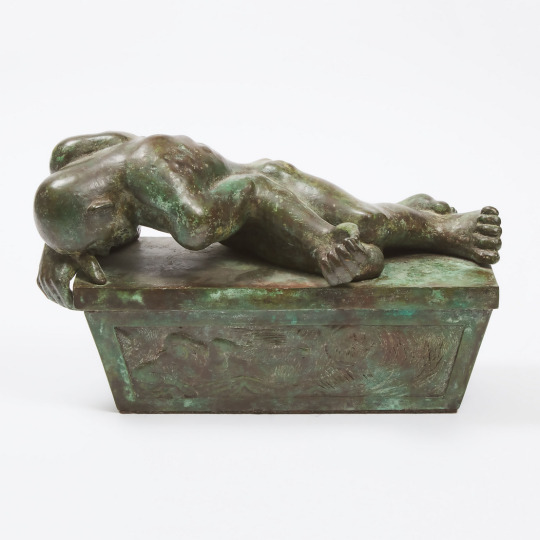
Malcolm Woodward (1943-2014), British ADAM: THE FALL, 1977 Patinated bronze signed "Woodward" and numbered 2/9 along one lower side panel. 9.0 ins x 15.25 ins x 6.75 ins; 23.5 cms x 38.7 cms x 17.8 cms
(via)
#wuthering heights#emily jane bronte#malcolm woodward#adam#the fall#bronze#20th century#british#sculpture
0 notes
Text
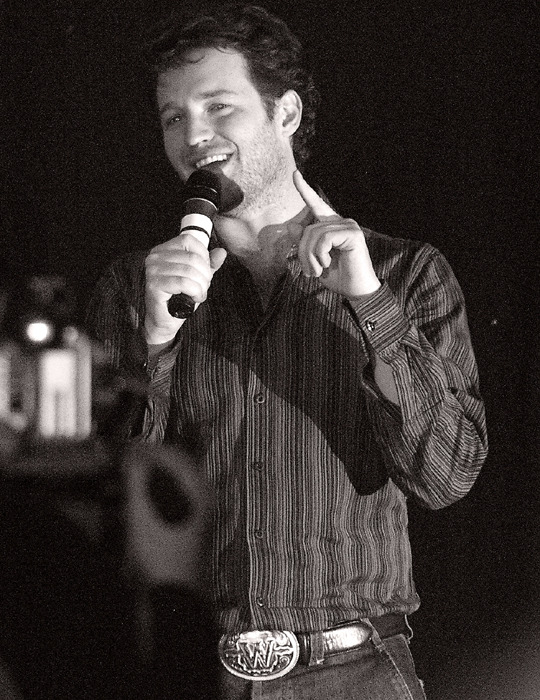

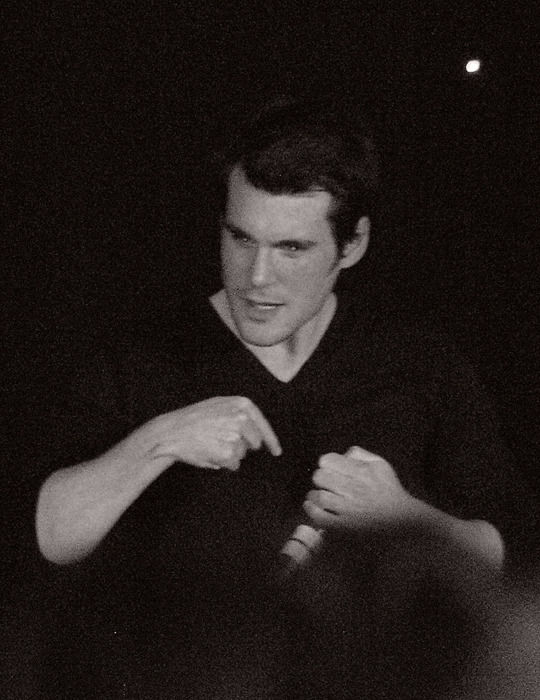



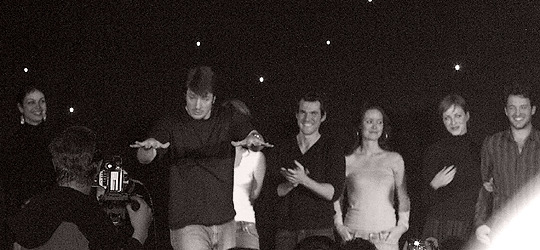
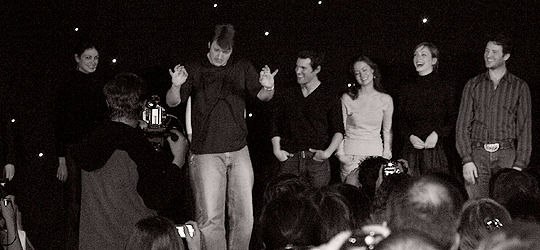
Serenity 2 - Starfury Convention London Nov 2005
Photos by me
Opening Ceremony
#Serenity2#Firefly#conventions#Nathan Fillion#morena baccarin#Jewel staite#sean maher#christina hendricks#Summer Glau#Jonathan Woodward#Malcolm Reynolds#Simon Tam#River Tam#inara serra#kaylee frye#Tracy#YoSaffBridge
126 notes
·
View notes
Photo




17 notes
·
View notes